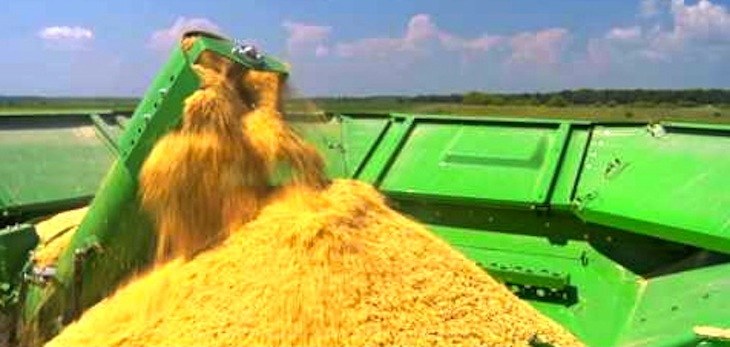More than 7.5 million acres planted in Arkansas, most since 1997
by July 2, 2018 2:08 pm 696 views

Farmers in the Natural State have planted 650,000 more acres this year than in 2017, according to the U.S. Department of Agriculture’s National Agricultural Statistics Service (NASS). A total of 7.556 million acres have been planted, the most since 1997.
Soybeans, cotton, rice, corn, and oats are among the crops with a spike in acreage, NASS reported.
The nation’s No. 1 rice producer added even more acres this year, and its soybean growers planted the most acres since 1997, according to the Arkansas numbers from Friday’s Acreage Report from the National Agricultural Statistics Service. Arkansas, the nation’s top rice producer, still likes rice, with 1.391 million acres in the ground. California was next with 487,000, Louisiana third at 410,000 acres.
Scott Stiles, extension economist for the University of Arkansas System Division of Agriculture, said when the June Acreage Report comes out its interesting to analyze what farmers actually did compared to what they intended to do early in the planting season.
“As far as the Arkansas numbers go, the June Acreage was exactly the same as the March intentions for corn, cotton, soybeans, medium grain rice and peanuts,” he said. “The only adjustments were in grain sorghum and long grain rice. Commodity prices for everything were higher this spring compared to 2017. From January to May this year, new crop soybean futures averaged $10.34, corn about $4, and cotton 80 cents.”
COTTON’S ‘PROFIT POTENTIAL’
Cotton farmers planted 480,000 acres in 2018, up from 445,000 last year. It’s the third straight year of increasing cotton acres in Arkansas, according to NASS.
“We’re seeing cotton in places we hadn’t seen it grown in 15 to 20 years,” Bill Robertson, extension cotton agronomist for the Division of Agriculture said. “Their daddies and granddaddies grew cotton, but they hadn’t. The profit potential for cotton is starting to look better in the last few years.”
Chinese farmers have been having problems with their cotton crops, and there have been problems with planting cotton in Texas, he said. One of cotton’s biggest competitors, polyester, is in decline. Those factors have compelled Arkansas cotton farmers to up their acreage, he said.
“There’s been a lot of pressure from the environmental community to start shutting down some of those polyester plants,” he said. “China had a ton of them. With low oil prices it was difficult to compete. Now, the main competition to cotton has fallen on some well-deserved hard times.”
Arkansas peanut acreage remains the same as last year, 30,000 acres. Arkansas corn acreage rose 30,000 acres from 2017 to 650,000 acres. Grain sorghum rose to 10,000 acres this year, about 1,000 more than last year, according to NASS. Arkansas winter wheat acreage also declined from 200,000 acres planted last year to 180,000 this year.
RICE AND SOYBEANS
Jarrod Hardke, extension rice agronomist for the Division of Agriculture, said the 1.391 million acres was in line with his projection of 1.4 million. What surprised him was how those acres were distributed between medium and long grain. NASS put medium grain acres at 180,000.
“Planting progress was way behind what we experienced in 2016 and 2017,” he said. “I was beginning to scale back my projections because we were not getting that opportunity to plant.”
Once the ground began to dry, low-laying areas in fields – the ones “that tend to flood out, go into rice,” Hardke said. “We planted almost all those areas that we hadn’t had the opportunity to plant in the last few years. That’s certainly something that helped drive getting to the acreage number we achieved.”
Stiles was surprised too.
“With soybean prices holding well above $10 this spring, I thought we might see some late rice acres shift to soybeans,” Stiles said. “It appears that didn’t happen as NASS’ soybean acreage for the state held steady from March to June at 3.6 million. Rice prices hit some lofty highs in late April and that kept growers from shifting rice acres to soybeans.”
Arkansas’ 3.6 million acres is the highest since 1997’s 3.65 million acres, Stiles said. Soybean farmers will likely struggle this season after record-setting yields in 2017. Looming trade wars with China and other international trade partners could drive prices down, and a hot dry forecast could impact crops and prices, Stiles said.
